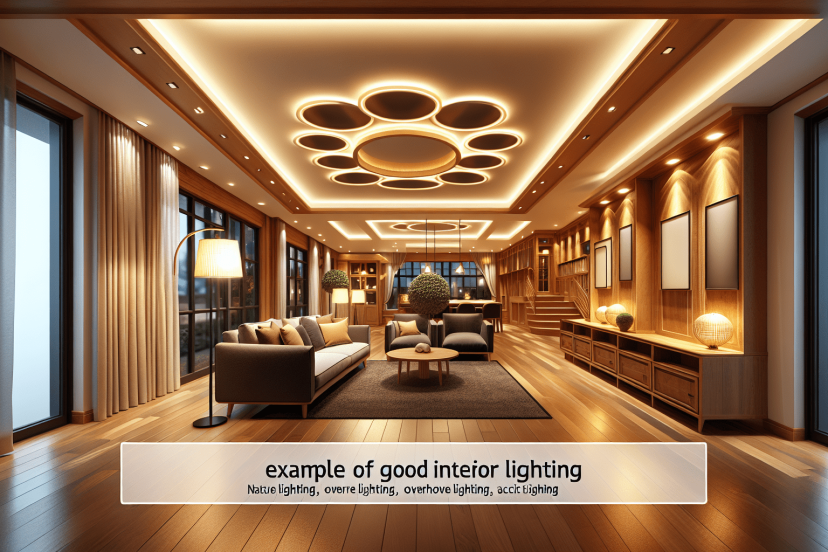What Is The Best Lighting For Showing A House?
When it comes to selling your house, creating the perfect ambiance can make all the difference in capturing potential buyers’ imaginations. But what is the best lighting for showing a house? Whether you’re looking to highlight architectural features, create a warm and inviting atmosphere, or simply make the space feel brighter and more spacious, finding the right lighting can enhance the overall appeal of your home. In this article, we’ll explore different lighting techniques and fixtures that can transform your house into a showcase-worthy space, leaving a lasting impression on potential buyers. When it comes to showcasing your home, one of the most important elements to consider is lighting. Proper lighting not only enhances the overall ambience and atmosphere of your space but also highlights its best features. From natural lighting to artificial lighting, there are various factors to consider to ensure that you create an inviting and visually appealing environment for potential buyers. In this comprehensive article, we will explore the importance of natural and artificial lighting, provide strategies to maximize their effects, and offer tips for specific areas of your home. Whether you’re preparing for an open house or trying to enhance your everyday living spaces, these lighting tips are sure to make a difference.
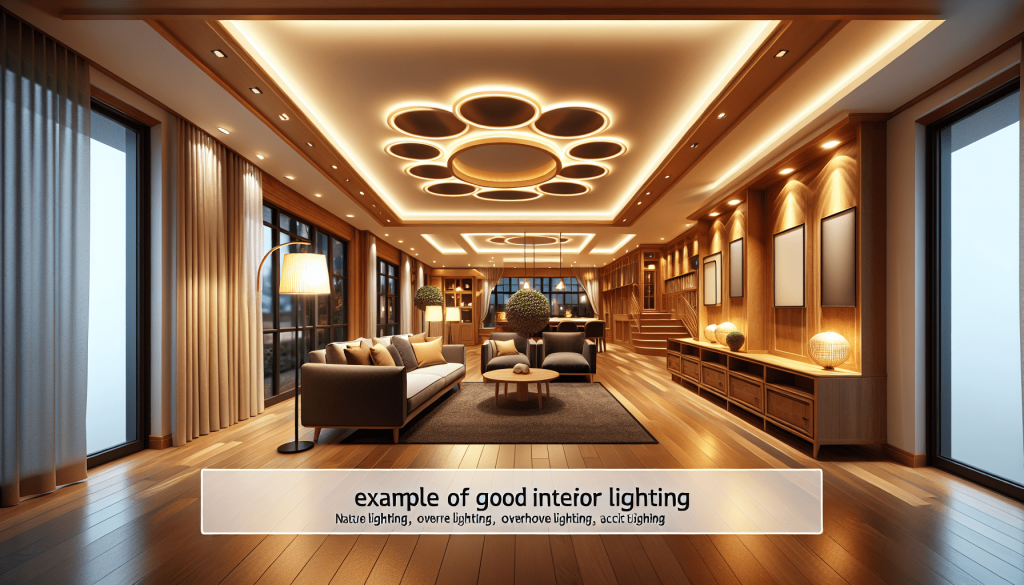
Natural Lighting
Importance of natural lighting
Natural lighting can transform a space, making it feel brighter, more spacious, and inviting. The benefits of natural light extend beyond aesthetics, as it also has the ability to boost mood, improve productivity, and even contribute to better sleep. When showcasing your home, harnessing the power of natural lighting can be an effective way to create a positive impression on potential buyers.
Strategies to maximize natural lighting
To maximize the impact of natural lighting, it’s essential to understand the layout and orientation of your home. Consider these strategies when utilizing natural light:
- Keep windows clean: Regularly clean your windows to ensure that natural light can penetrate your space unobstructed.
- Remove heavy window treatments: Opt for light and airy curtains or blinds that allow sunlight to filter through while maintaining privacy.
- Use light-colored paint: Light colors on walls and ceilings can help bounce and reflect natural light, making your space feel brighter.
- Strategic furniture placement: Arrange furniture to avoid blocking light sources and allow for the flow of natural light throughout the room.
- Utilize mirrors: Placing mirrors strategically can help bounce and distribute natural light, creating a brighter and more spacious feel.
Considerations for different times of day
The quality and intensity of natural light changes throughout the day. Consider these factors when showcasing your home:
- Morning light: Morning light tends to be cooler and softer, creating a calm and refreshing atmosphere. Showcase areas where morning light shines through, such as breakfast nooks or reading corners.
- Afternoon light: Afternoon light is generally warmer and more intense. Highlight spaces that benefit from this beautiful glow, such as living rooms or dining areas.
- Evening light: Evening light can create a cozy and intimate ambiance. Showcase spaces with dimmer lighting options, such as bedrooms or outdoor entertaining areas.
Artificial Lighting
Types of artificial lighting
While natural lighting is ideal, it’s not always available or sufficient. This is where artificial lighting comes into play. There are three main types of artificial lighting to consider:
- Ambient lighting: Also known as general lighting, ambient lighting provides overall illumination for a room. It sets the tone and provides a foundation for other lighting layers.
- Task lighting: Task lighting focuses on specific areas where activities such as reading, cooking, or grooming take place. It provides direct and targeted illumination.
- Accent lighting: Accent lighting is used to highlight architectural features, artwork, or specific objects in a space. It adds depth and visual interest.
Choosing the right light bulbs
Selecting the right light bulbs can significantly impact the quality and ambience of your space. Consider these factors when choosing light bulbs:
- Color temperature: Light bulbs come in various color temperatures, ranging from warm to cool. Consider the mood and purpose of each area when selecting the appropriate color temperature.
- Energy efficiency: Opt for energy-efficient light bulbs, such as LED bulbs, to save on electricity costs and reduce environmental impact.
- Brightness: Consider the desired brightness level for each area. Bedrooms may require softer, dimmer lighting, while kitchens and workspaces may need brighter bulbs.
Layering lighting techniques
Layering different lighting techniques can create depth, highlight focal points, and enhance the overall ambiance of your home. Consider these tips for effective lighting layering:
- Combine ambient, task, and accent lighting: Create a harmonious balance by incorporating all three types of lighting into each room.
- Use dimmers: Dimmers allow you to adjust the brightness of your lights, providing versatility and the ability to create different moods.
- Utilize lighting fixtures: Choose a variety of lighting fixtures, such as chandeliers, pendant lights, and recessed lighting, to add visual interest and focal points.
General Lighting Tips
Balancing brightness and warmth
Finding the right balance between brightness and warmth is essential for creating a comfortable and inviting atmosphere. Strike a balance between bright and warm lighting by considering the following:
- Use warm LED bulbs: Choose LED bulbs with a warm color temperature (around 2700K-3000K) to create a cozy and welcoming environment.
- Combine different lighting sources: Utilize lamps, overhead lighting, and natural light to create layered lighting that provides both brightness and warmth.
Highlighting focal points
Whether it’s an architectural element, a piece of artwork, or a cherished family heirloom, highlighting focal points can add depth and visual interest to your space. Consider these tips for highlighting focal points:
- Add directional lighting: Use spotlights or track lighting to draw attention to specific focal points, such as a fireplace or artwork.
- Experiment with lighting angles: Play with different angles of light to create shadow and depth, adding drama and highlighting unique features.
Avoiding glare and shadows
Glare and shadows can be distracting and detract from the beauty of your space. Follow these tips to minimize glare and shadows:
- Use indirect lighting: Indirect lighting, such as wall sconces or uplights, can help eliminate harsh shadows and create a soft and even glow.
- Utilize lampshades and diffusers: Lampshades and diffusers can help diffuse and soften light, reducing glare and creating a more comfortable environment.
Entryway Lighting
Creating an inviting entrance
Your entryway sets the tone for your entire home, so it’s essential to create an inviting and welcoming atmosphere. Consider these tips for entryway lighting:
- Choose a statement fixture: Install a striking chandelier or pendant light to make a statement and set the tone for your home.
- Utilize wall sconces: Wall sconces on either side of the door can provide a warm and welcoming glow.
- Add landscape lighting: Illuminate your pathway and highlight your landscaping to enhance curb appeal and guide visitors to your door.
Choosing the right fixtures
Choosing the right fixtures for your entryway can make a significant impact on its overall aesthetic. Consider these factors when selecting entryway lighting fixtures:
- Ceiling height: Consider the height of your ceiling when choosing a chandelier or pendant light to ensure it is proportionate to the space.
- Style and theme: Select fixtures that complement the style and theme of your home. From traditional to modern, there is a wide range of options to suit any design aesthetic.
- Functionality: Ensure that the chosen fixtures provide adequate lighting to navigate the space while also contributing to its visual appeal.
Enhancing security and safety
In addition to aesthetics, entryway lighting also plays a crucial role in home security and safety. Keep these considerations in mind:
- Motion sensor lights: Install motion sensor lights to deter potential intruders and provide added security at night.
- Well-lit pathways and stairs: Ensure that your pathways and stairs are well-lit to prevent accidents and enhance safety for both residents and visitors.
- Consider smart lighting: Smart lighting systems can be integrated with security systems, allowing you to control and monitor your entryway lighting from anywhere.
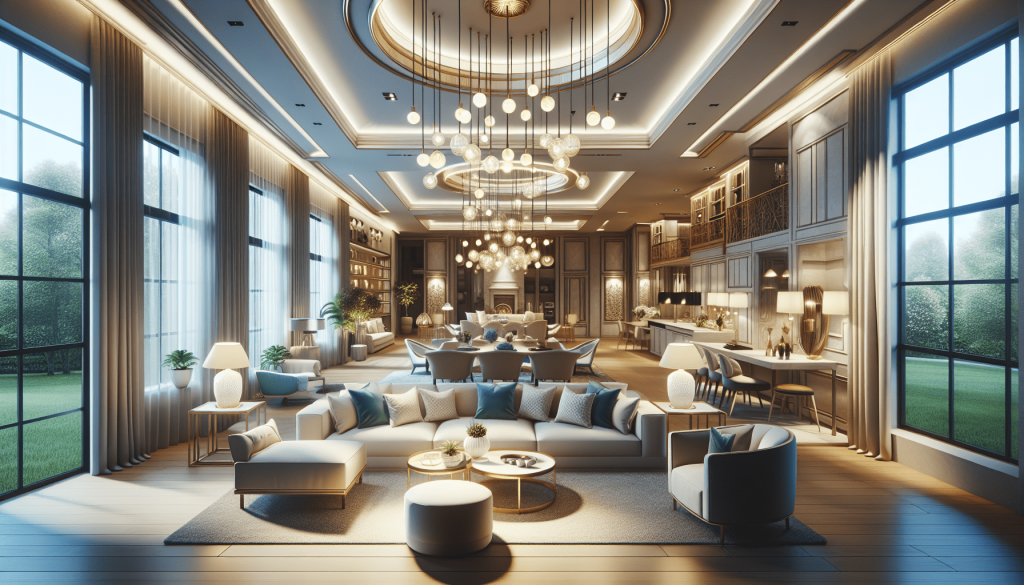
Living Room Lighting
Creating an ambient and versatile space
The living room is a space where you entertain guests, relax, and spend quality time with your family. Consider these tips for creating an ambient and versatile living room:
- Layer lighting: Use a combination of ambient, task, and accent lighting to create a well-balanced and multi-functional space.
- Consider ceiling fixtures: Install a stylish chandelier or ceiling fixture as a focal point, providing overall ambient lighting.
- Utilize floor and table lamps: Floor and table lamps provide additional lighting options and flexibility, allowing you to change the mood of the room as needed.
Using accent lighting to highlight features
Your living room may have unique architectural features, artwork, or cherished items that deserve to be showcased. Consider these tips for using accent lighting effectively:
- Track lighting: Install track lighting to highlight artwork or architectural elements on your walls.
- Cove lighting: Utilize cove lighting to create a soft and indirect glow, providing a subtle accent to your living room.
- Shelf or display lighting: Place lights strategically on shelves or display cabinets to draw attention to decorative items, books, or collectibles.
Task lighting for functional areas
The living room is a space where various activities take place, such as reading, working, or playing games. Ensure that your living room provides adequate task lighting with these tips:
- Floor or table lamps: Position floor or table lamps next to seating areas to provide direct and focused light for reading or other activities.
- Overhead adjustable lighting: Install adjustable track or pendant lighting above work or game tables to provide targeted illumination.
Kitchen Lighting
Importance of efficient and practical lighting
The kitchen is often the heart of the home and requires efficient and practical lighting for cooking, cleaning, and entertaining. Consider these tips for kitchen lighting:
- Install overhead lighting: Use recessed or flush mount ceiling lights to provide general illumination for the entire kitchen area.
- Add under-cabinet lighting: Install LED strip lights under cabinets to provide task lighting for food preparation areas.
- Utilize pendant lights: Hang pendant lights over islands or dining tables to provide both functional and decorative lighting.
Under-cabinet lighting for task areas
Under-cabinet lighting not only enhances the functionality of your kitchen but also adds a touch of elegance. Consider these tips for under-cabinet lighting:
- LED strip lights: Choose LED strip lights for their energy efficiency and flexibility to fit various cabinet sizes and shapes.
- Dimmable options: Opt for dimmable under-cabinet lighting to adjust the brightness according to your needs and mood.
Creating an inviting and spacious atmosphere
A well-lit kitchen can create an inviting and spacious atmosphere, making it a welcoming space for cooking and socializing. Consider these tips for enhancing your kitchen’s ambiance:
- Utilize natural light: Maximize natural light by keeping windows uncovered or using sheer curtains to allow sunlight to flood your kitchen.
- Reflective surfaces: Incorporate reflective surfaces, such as glossy countertops or glass backsplashes, to bounce and amplify natural light.
- Avoid shadows: Ensure that overhead lighting doesn’t create shadows on work surfaces by positioning fixtures strategically and utilizing task lighting.
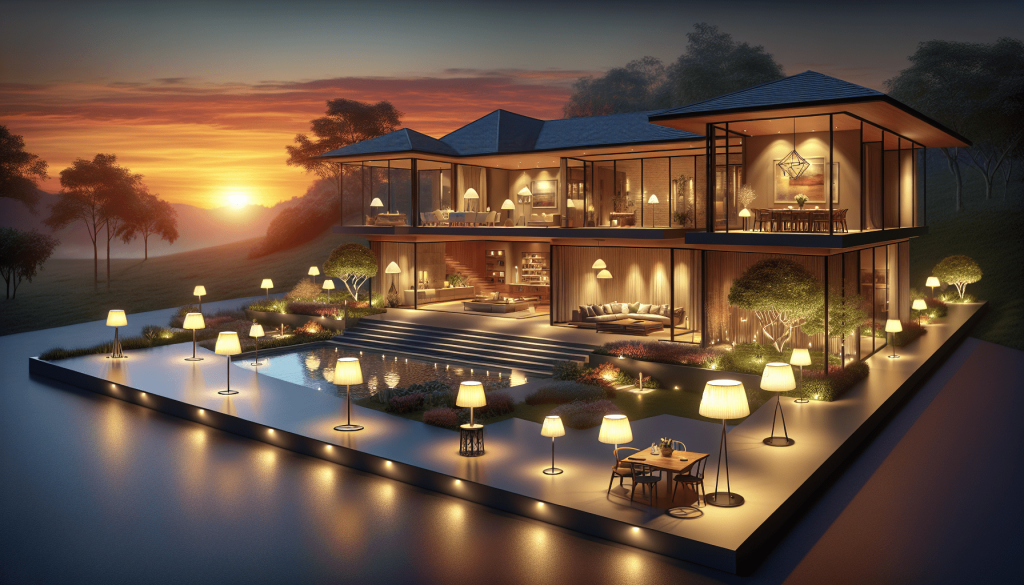
Bathroom Lighting
Ensuring proper lighting for grooming and makeup
The bathroom is a space where proper lighting is essential for grooming, applying makeup, and other personal care tasks. Consider these tips for optimal bathroom lighting:
- Evenly distributed lighting: Utilize a combination of ambient and task lighting to ensure even illumination throughout the entire bathroom.
- Vanity lighting: Install vanity lights around the bathroom mirror at eye level to minimize shadows on the face and create optimal lighting for grooming.
Preventing shadows and enhancing visibility
Shadows in the bathroom can make grooming tasks challenging. Follow these tips to prevent shadows and enhance visibility:
- Lighting placement: Install wall sconces on either side of the mirror instead of above it, as this helps to eliminate shadows on the face.
- Consider color temperature: Choose light bulbs with a color temperature of around 4000K to 5000K, which mimics natural daylight and provides accurate color rendering.
Choosing appropriate fixtures for moisture-rich environment
The bathroom is often a moisture-rich environment, so it’s essential to choose fixtures that are suitable for these conditions. Consider these factors when selecting bathroom lighting fixtures:
- IP rating: Ensure that the fixtures have a high IP (Ingress Protection) rating, indicating their resistance to moisture and water.
- Materials: Opt for materials such as metal or plastic that are less prone to rust or corrosion in high-humidity environments.
Bedroom Lighting
Creating a relaxing and cozy atmosphere
The bedroom should be a tranquil sanctuary, and lighting plays a significant role in creating a relaxing and cozy atmosphere. Consider these tips for bedroom lighting:
- Dimmers: Install dimmer switches to adjust the brightness according to your needs and create a soft and soothing ambiance.
- Indirect lighting: Utilize wall sconces or cove lighting to provide a soft and diffuse glow, creating a calming effect.
- Bedside lamps: Place bedside lamps on nightstands for individual control of lighting and convenience.
Selecting appropriate light levels for different activities
The bedroom serves various purposes, from reading to getting dressed, so it’s essential to have appropriate light levels for each activity. Consider these tips:
- Task lighting: Position a reading lamp or wall-mounted directional light near seating areas for focused illumination during activities like reading.
- Layered lighting: Use a combination of overhead lighting, accent lighting, and task lighting to provide flexibility and accommodate different activities.
Installing dimmers for versatility
Dimmer switches offer versatility and control over the lighting in your bedroom. Consider these benefits of installing dimmers:
- Mood control: Dimmers allow you to adjust the lighting levels to create different moods and atmospheres, whether it’s for relaxation or productivity.
- Energy efficiency: Lowering the brightness using dimmers can help conserve energy and extend the lifespan of your light bulbs.
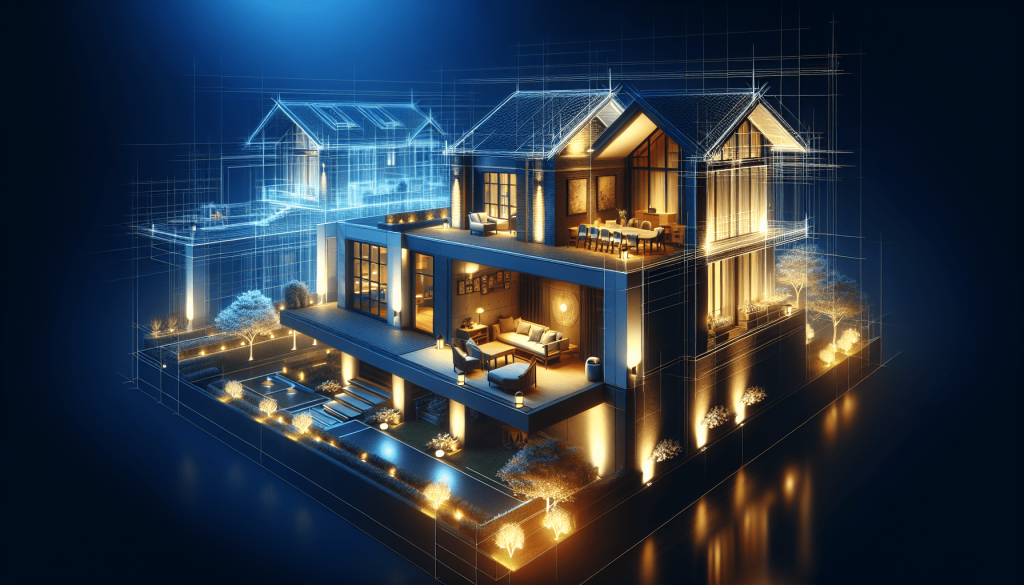
Outdoor Lighting
Enhancing curb appeal and home security
Outdoor lighting not only enhances the curb appeal of your home but also plays a crucial role in home security. Consider these tips for outdoor lighting:
- Pathway lighting: Install low-voltage lights along your walkways and driveway to provide guidance and enhance safety at night.
- Accent lighting: Use well-placed spotlights or uplights to highlight architectural features, landscaping, or focal points.
- Motion sensor lights: Install motion sensor lights near entrances and dark corners to discourage intruders and provide added security.
Choosing the right fixtures for outdoor spaces
Selecting the right fixtures for your outdoor spaces can greatly enhance their overall aesthetic. Consider these factors when choosing outdoor lighting:
- Weather resistance: Ensure that the fixtures are designed for outdoor use and can withstand the elements, such as rain, wind, and UV exposure.
- Style and theme: Choose fixtures that complement the architectural style of your home and reflect your personal taste.
- Proper placement: Position lighting fixtures strategically to eliminate dark spots and create a visually balanced and inviting outdoor space.
Balancing functional and aesthetic aspects
When planning your outdoor lighting, it’s important to strike a balance between functionality and aesthetics. Consider these tips for achieving the right balance:
- Consider the purpose: Determine the intended use of each outdoor area and select lighting accordingly. For example, brighter lights may be more suitable for cooking and dining areas, while softer lighting may be preferred for lounging areas.
- Create layers of light: Similar to indoor lighting, layering different light sources can create depth and provide a more visually appealing environment.
- Experiment with colors: Incorporate colored lights or colored lenses to add visual interest and create a unique outdoor ambiance.
Smart Lighting Systems
Benefits of automated lighting
Smart lighting systems have become increasingly popular for their convenience and energy-saving capabilities. Consider these benefits of automated lighting:
- Convenience and control: With automated lighting, you can control and adjust your lights remotely, using your smartphone or voice commands.
- Energy efficiency: Smart lighting systems can be programmed to turn off when no one is in the room or adjust brightness levels based on natural light, thus saving energy and reducing utility bills.
- Security enhancement: Automated lighting can create the illusion of occupancy when you’re away by turning lights on and off at specific times, enhancing home security.
Integration with smart home technology
Smart lighting systems can be seamlessly integrated with other smart home technologies, enhancing the overall functionality and convenience of your home. Consider these integrations:
- Voice control: Pair your smart lighting system with voice assistants like Amazon Alexa or Google Assistant to control your lights with simple voice commands.
- Scheduling and automation: Integrate your lighting system with other smart devices to create automated schedules or scenes, such as “movie night” or “good morning” routines.
- Sensor integration: Connect your lighting system with sensors, such as motion sensors or light sensors, to automate lighting based on occupancy or ambient light levels.
Enhancing energy efficiency
Smart lighting systems offer various features that can enhance energy efficiency in your home. Consider these ways in which smart lighting can contribute to energy savings:
- Occupancy sensors: Install motion sensors that automatically turn off lights when no one is in the room, preventing unnecessary energy consumption.
- Daylight harvesting: Combine light sensors and smart lighting to adjust the brightness levels based on the amount of natural light available, maximizing energy efficiency.
- Remote control and monitoring: With the ability to control and monitor your lights remotely, you can optimize energy usage by ensuring that lights are turned off when not needed.
In conclusion, proper lighting is crucial for showcasing your home and creating an inviting and visually appealing environment. Whether it’s natural lighting, artificial lighting, or a combination of both, understanding the importance of lighting strategies and tips can greatly enhance the overall ambiance and atmosphere of your space. From entryways to bedrooms, from kitchens to outdoor spaces, each area of your home requires careful consideration and attention to ensure optimal lighting. By implementing these comprehensive tips and techniques, you can create a well-lit and impressive home that will leave a lasting impression on potential buyers and enhance your everyday living spaces.

